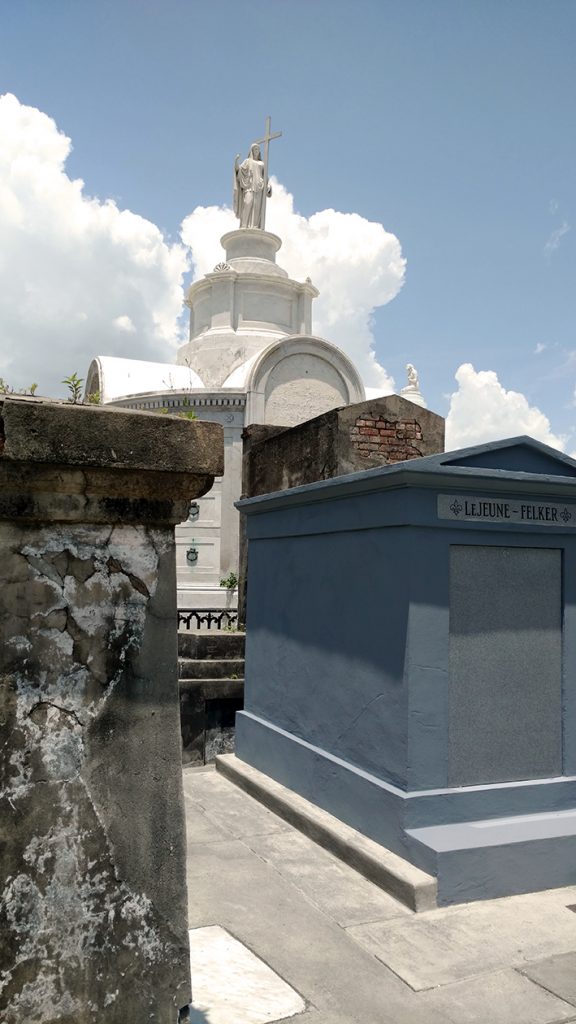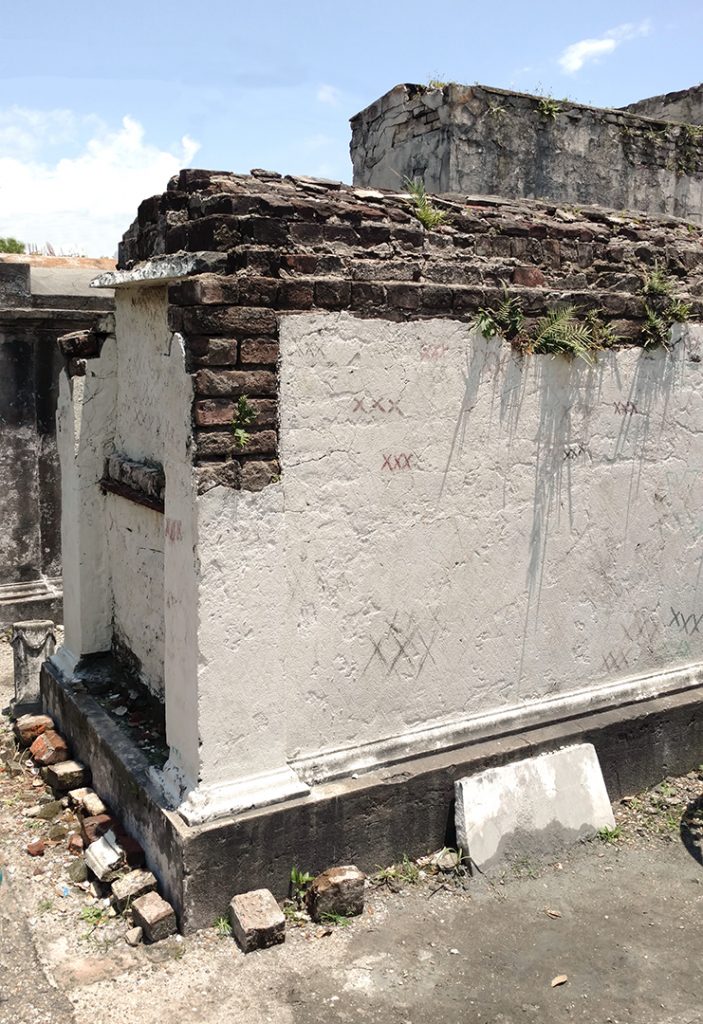For early residents of New Orleans, burying the dead was a challenge because it is below sea level. Water filled the hole when trying to dig. When caskets were buried, the water level would rise, making the air-tight caskets pop up out of the ground and float away. The answer was to create cities of the dead with crypts, tombs, and mausoleums above ground.
St. Louis Cemetery No. 1
St. Louis Cemetery No. 1 is the oldest in New Orleans, opening in 1789. The cemetery has more than 600 tombs, covers an area of 1 block, and is owned by the Roman Catholic Diocese of New Orleans. It is closed to the public except through entering with tour groups.
Many famous historical New Orleans people buried here, such as Homer Plessy, Voodoo Priestess Marie Laveau, which no one knows the exact tomb. Even Nicolas Cage purchased a space for his pyramid-shaped tomb.
Family crypts and tombs
Each tomb typically is for individual families, and the cemetery is home to thousands of New Orleans people and immigrants. Each family is responsible for the tomb’s upkeep, probably the reason so many are in disrepair. You can purchase perpetual upkeep, so the Church maintains your tomb. Only family members can be buried in the tomb unless someone is asked by the family to be buried there or the family sells the tomb.
You may wonder how so many family members can be buried in one tomb. We learned on a tour that the faceplate is removed, and behind the plate is laid brick. The brick is removed, and the body is placed in the tomb. With the heat in New Orleans, the body is left for one year and one day at which time the bricks are removed again, and the body is pushed to the rear of the tomb where the bones and remains fall to a pit below, allowing the tomb to be used by another family member.
There are large mausoleums for groups, such as Italians, ornate tombs for the wealthy, and walls of crypts for those that couldn’t afford a tomb.
The tour takes about an hour to walk, and it’s interesting to hear the cemeteries’ history. You’ll be amazed by the eerie beauty of this must-see site in New Orleans, Louisiana.







